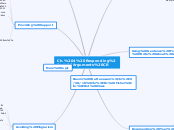af Naomi Wattanasarn 7 år siden
328
Ch. 4 Responding to Arguments CR

af Naomi Wattanasarn 7 år siden
328

Mere som dette
2. Provide specific points/examples from argument that support generalization
1. Generalize your point of view of the argument
"Separate out what is correct and what is not" (Rottenberg, Winchell 117)